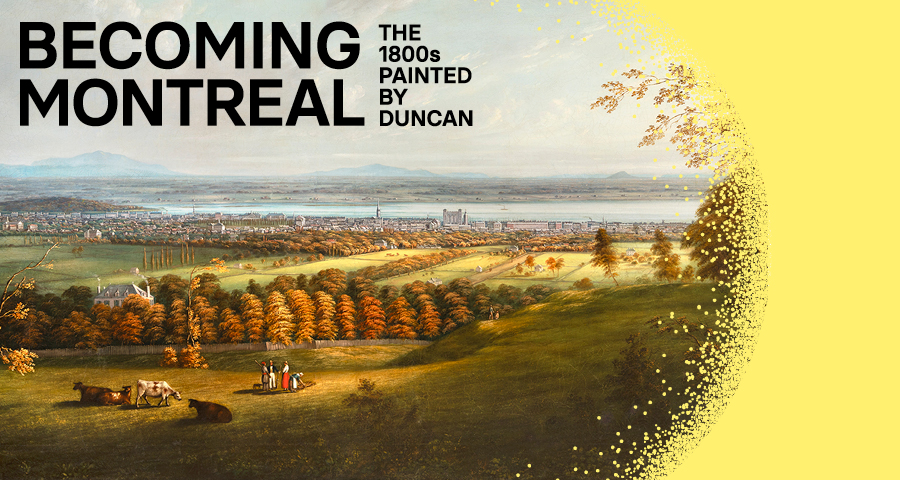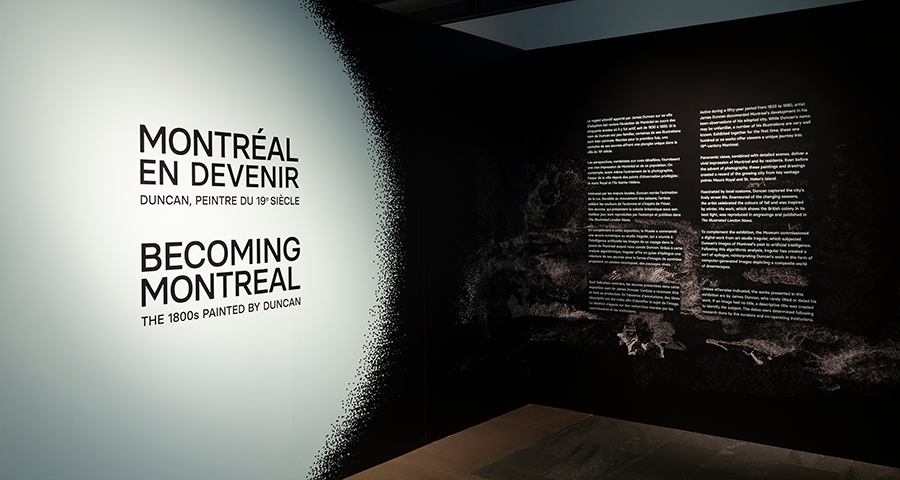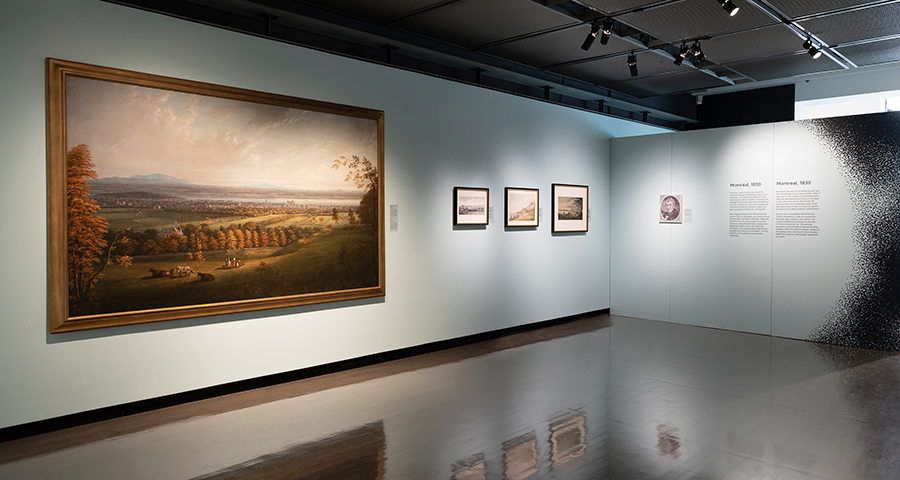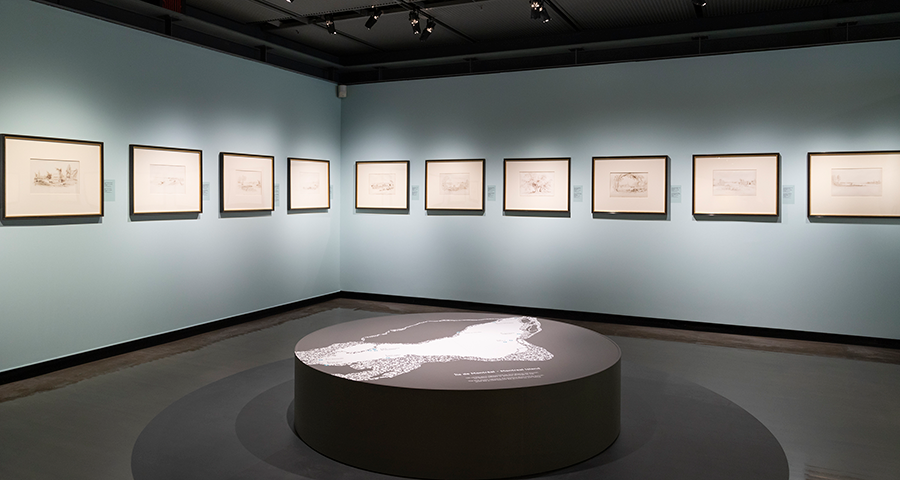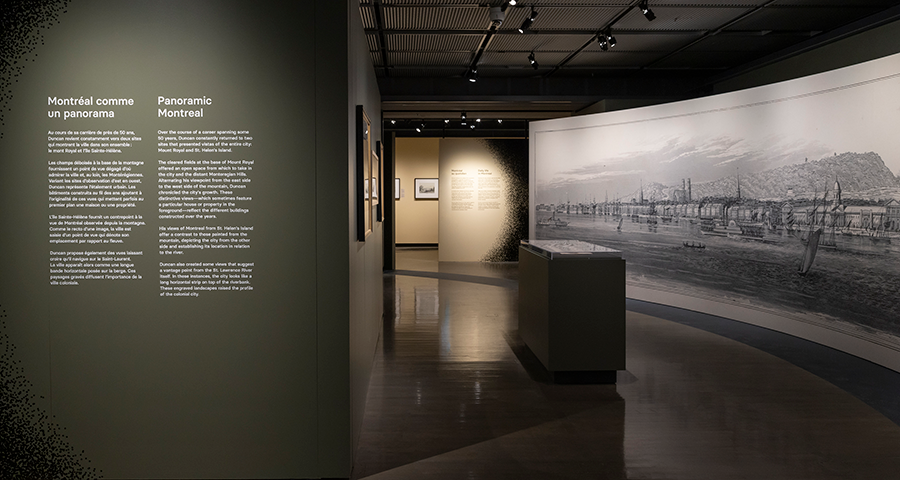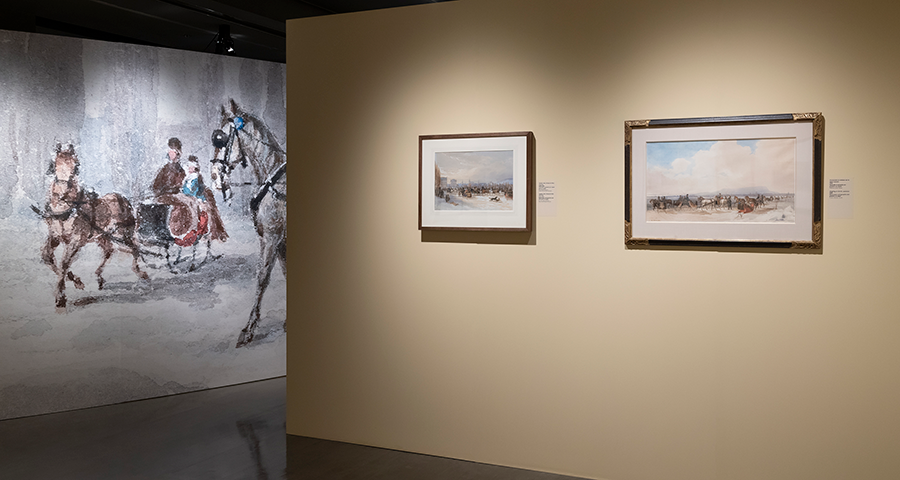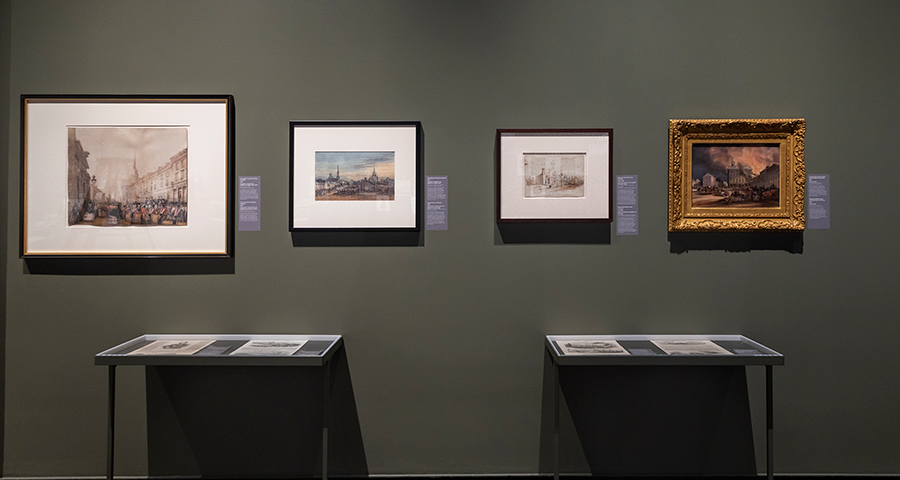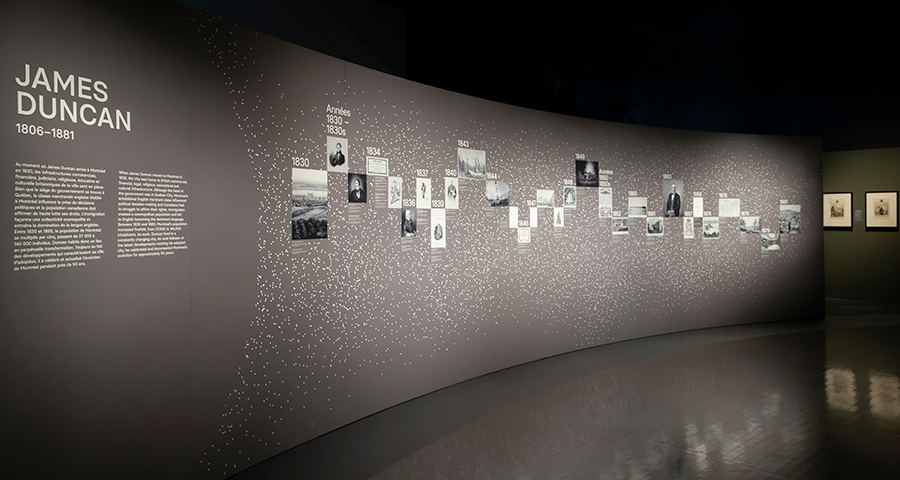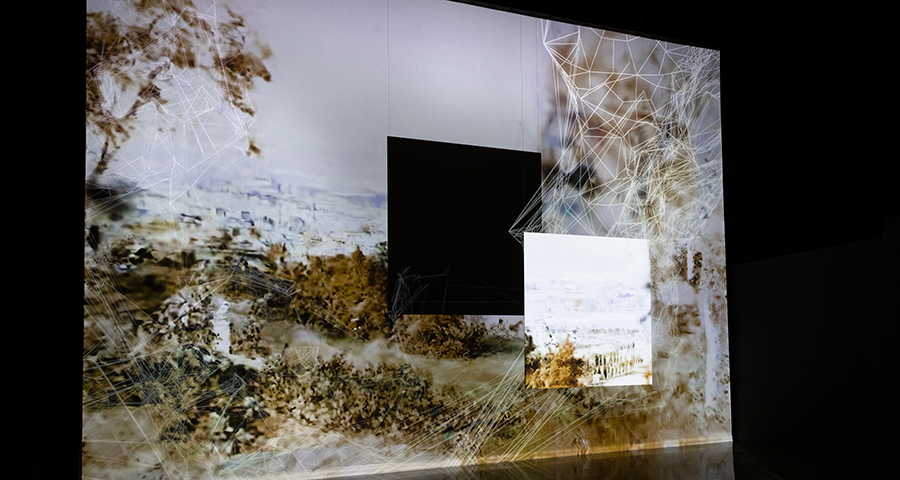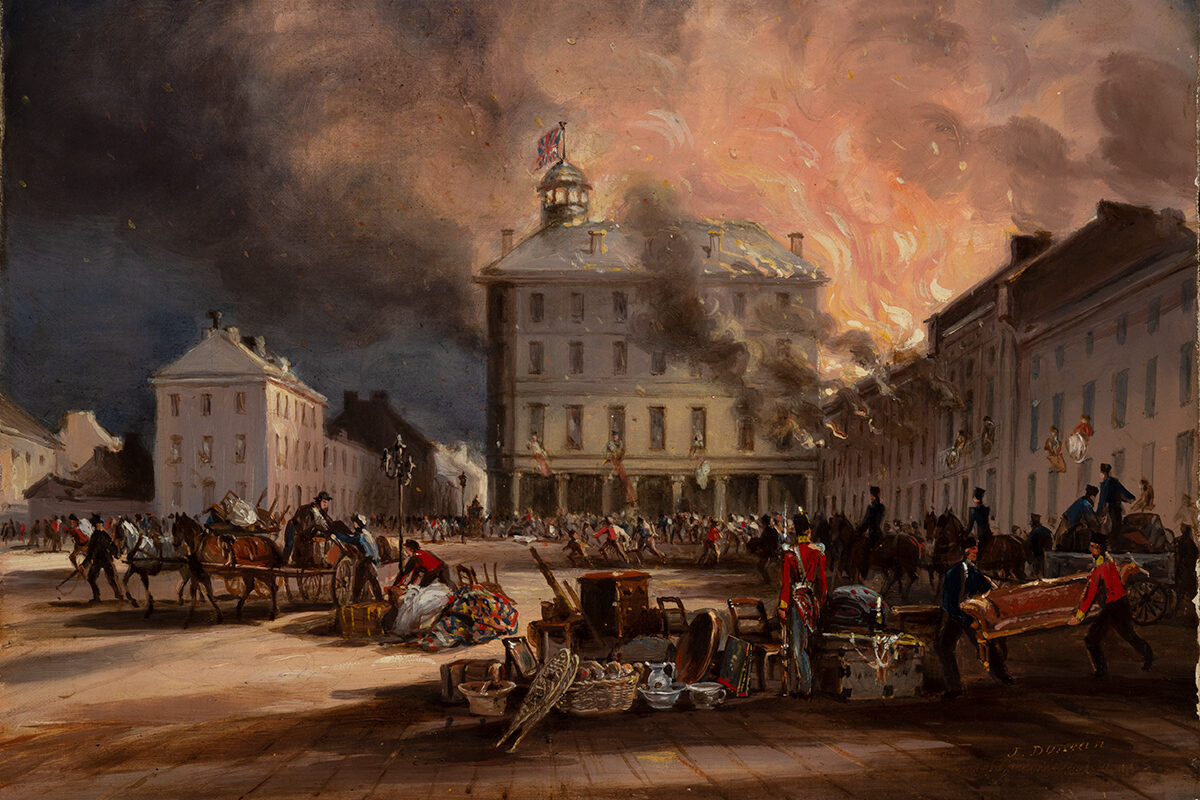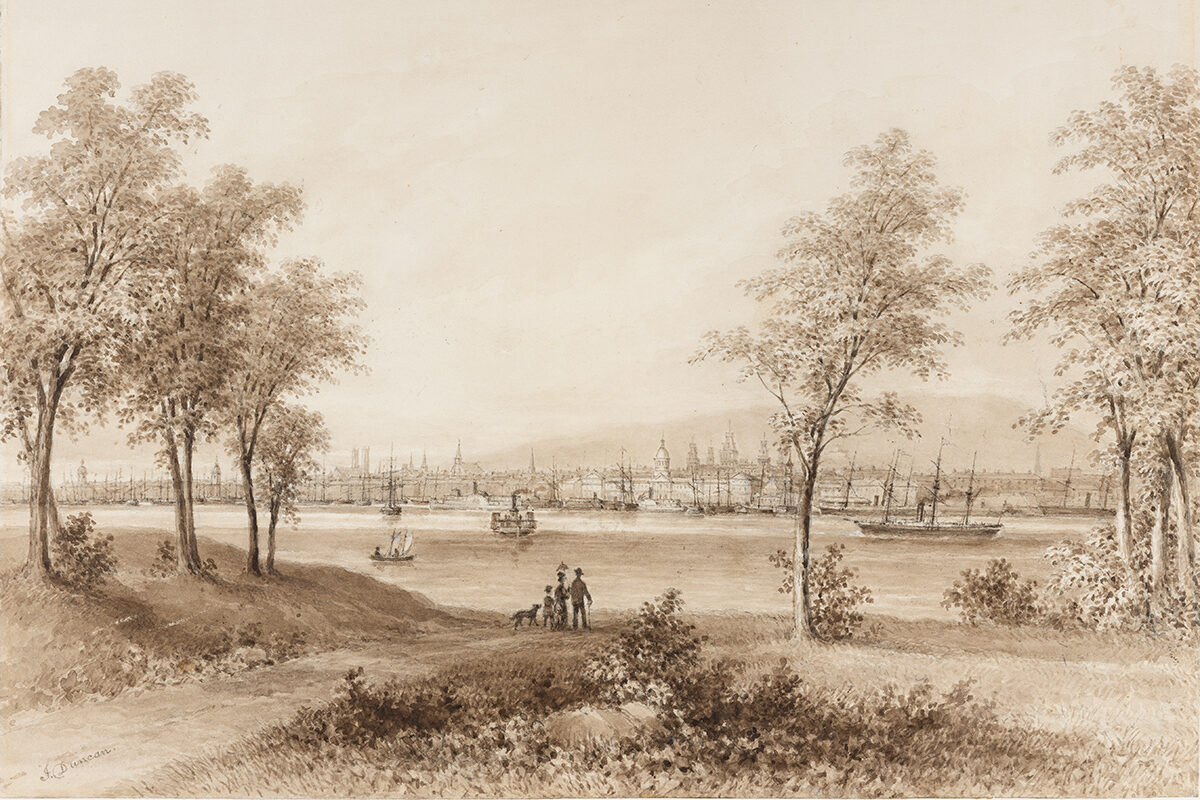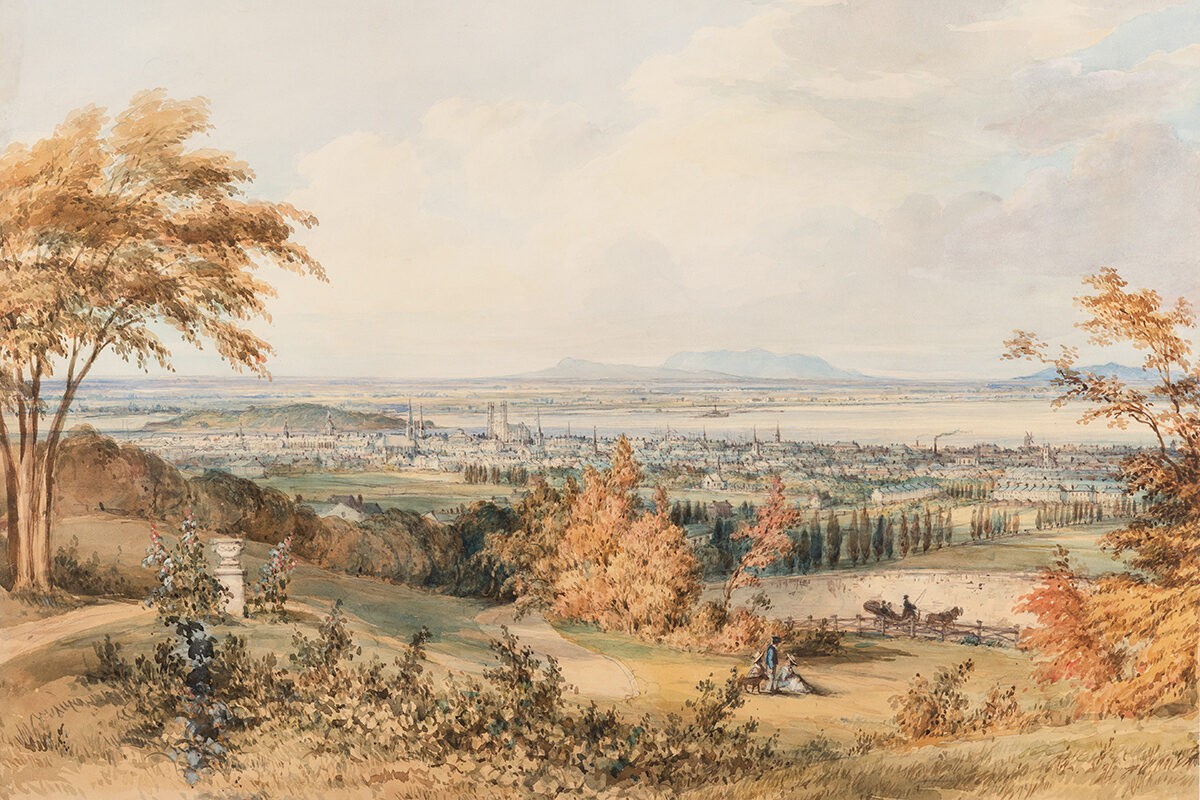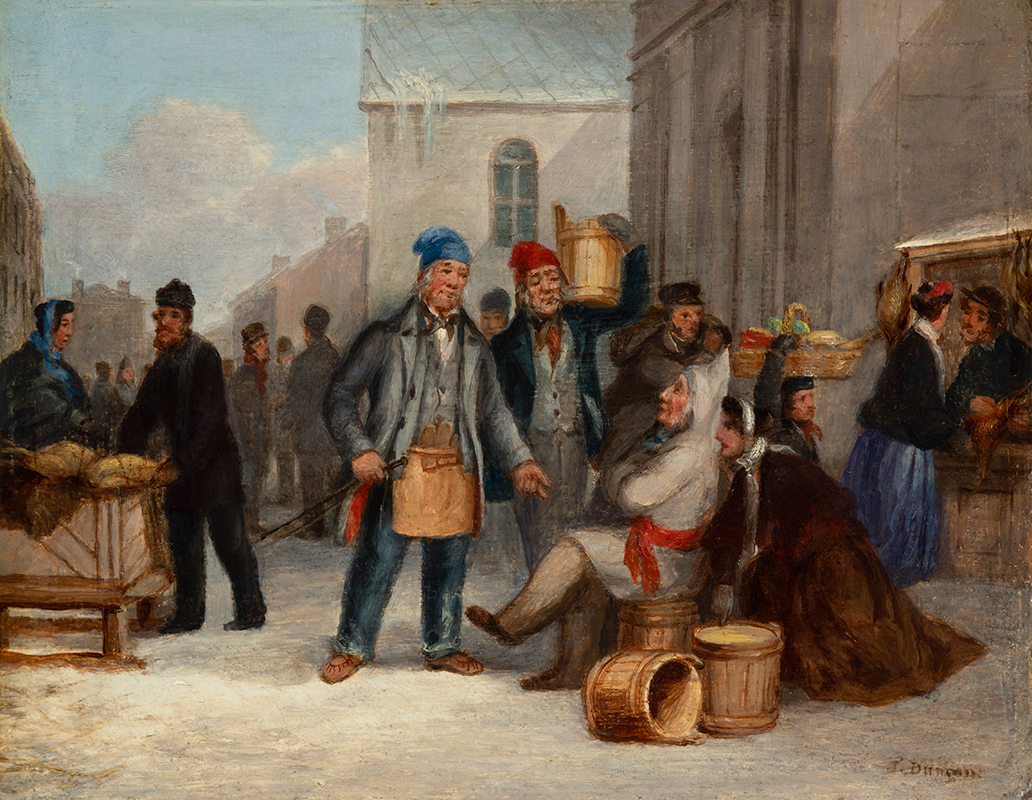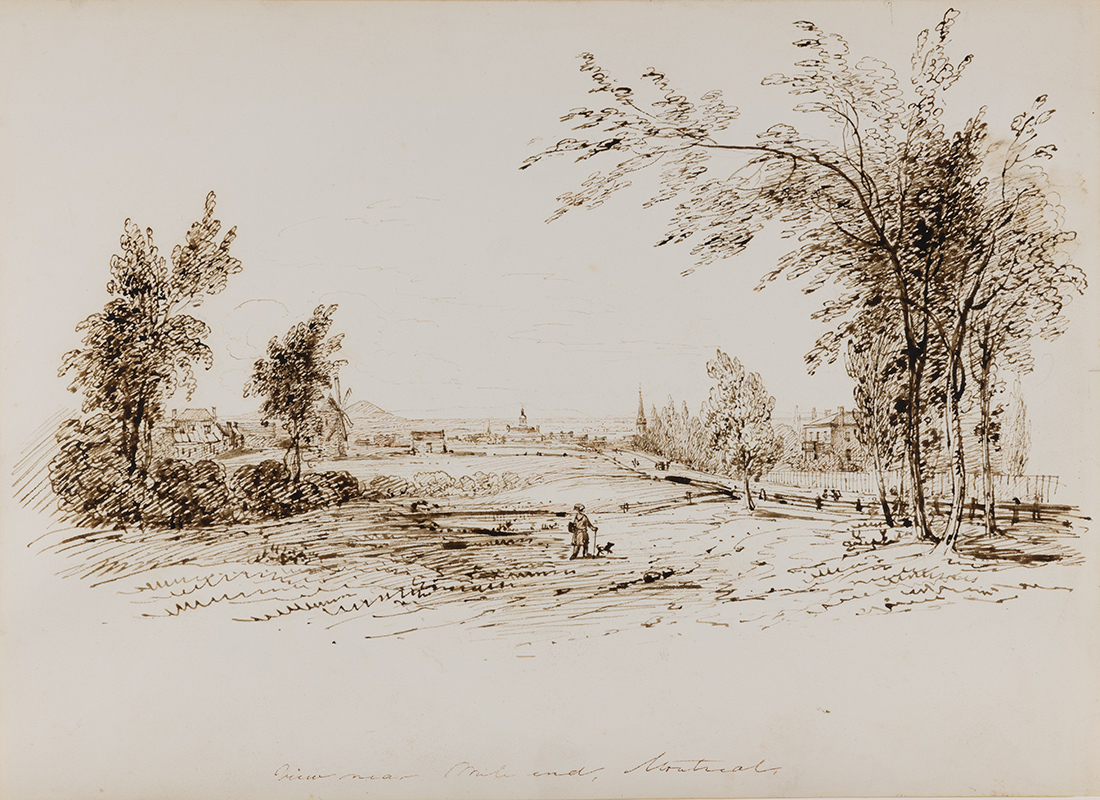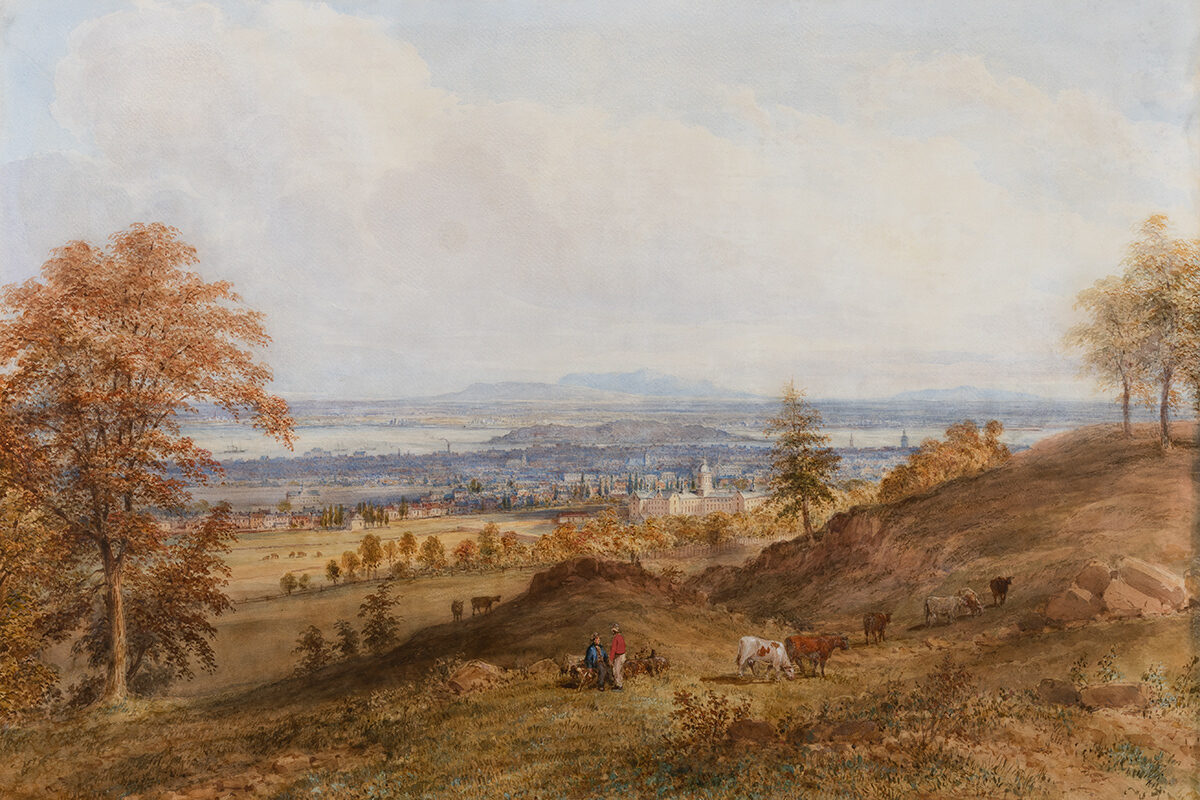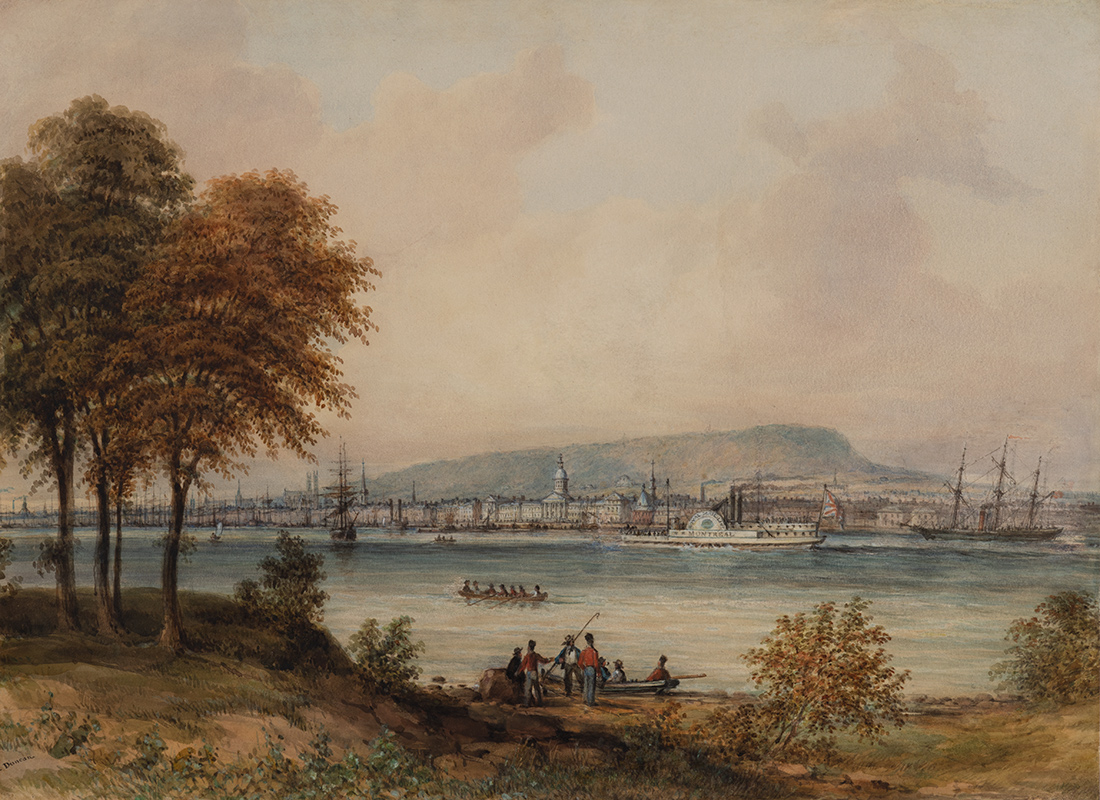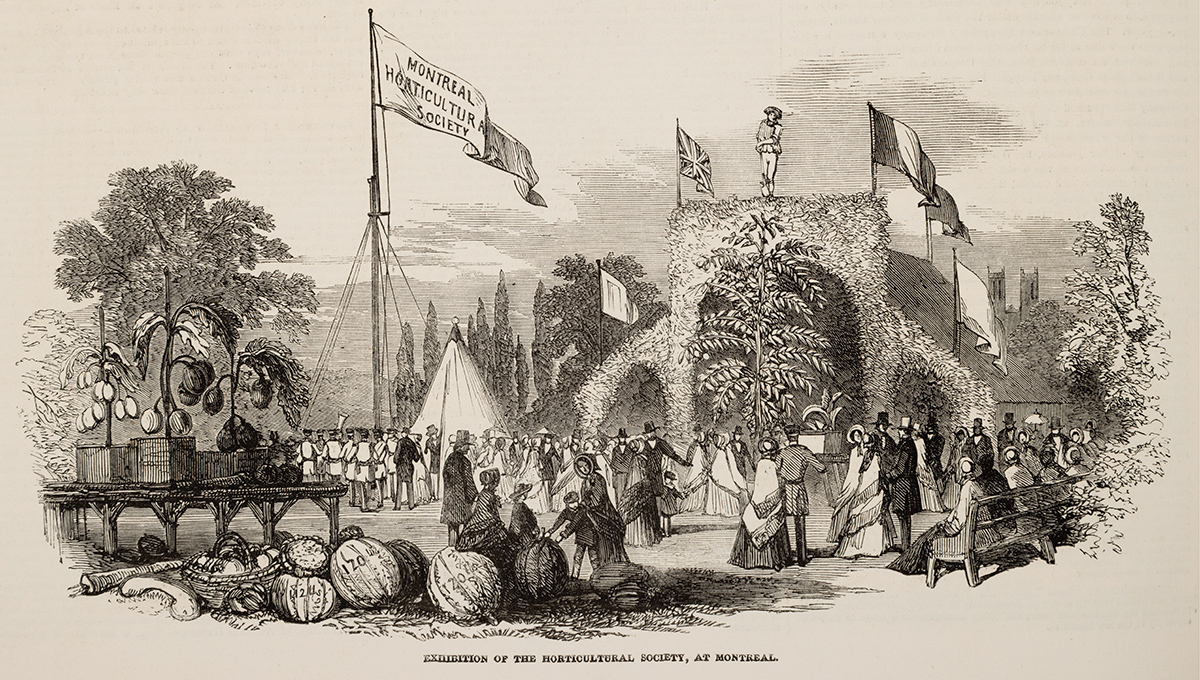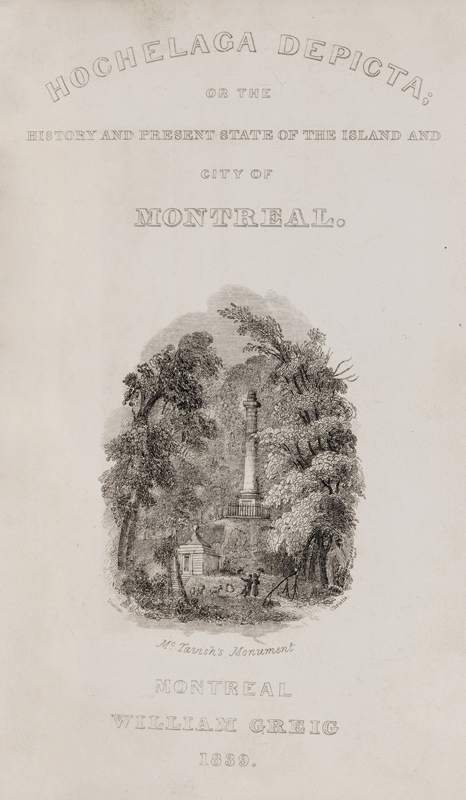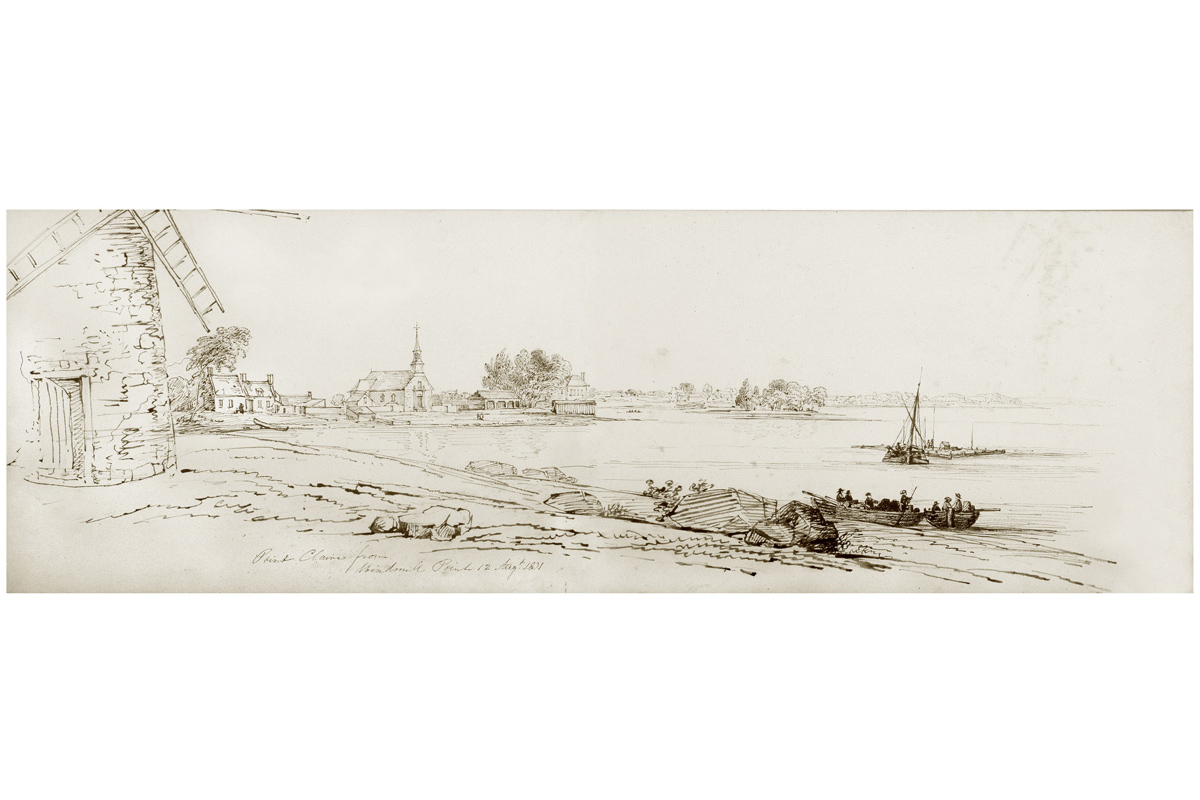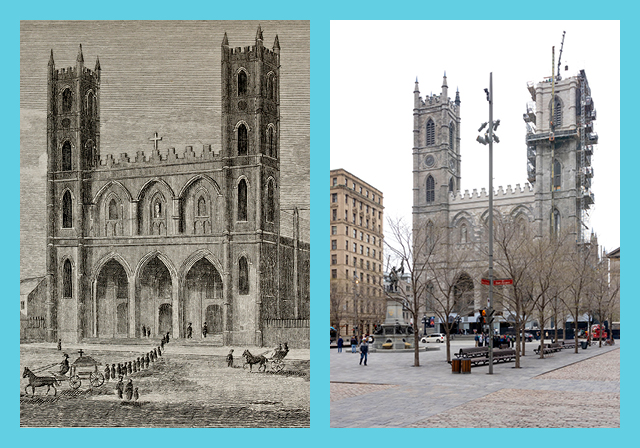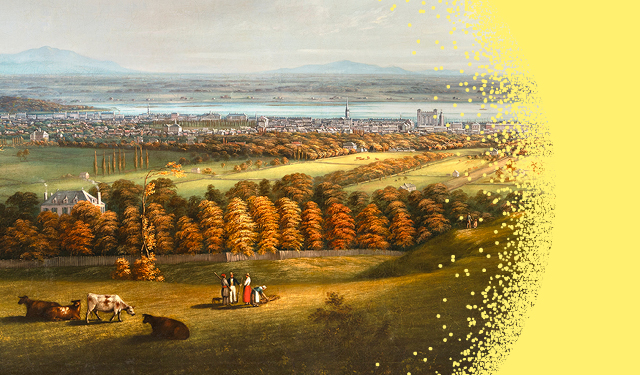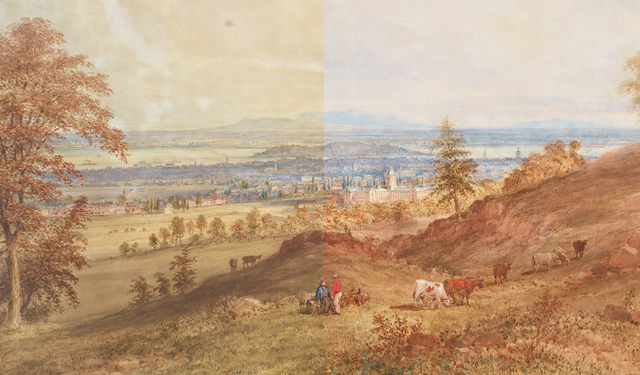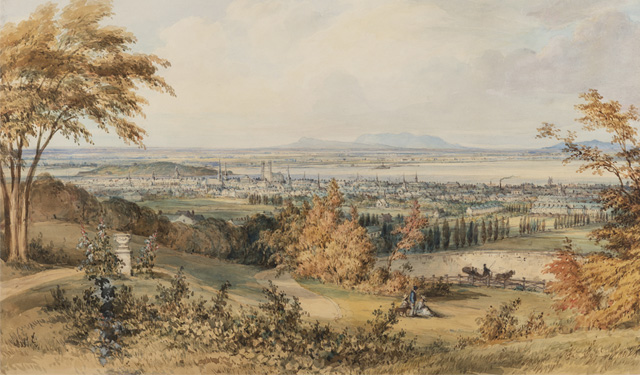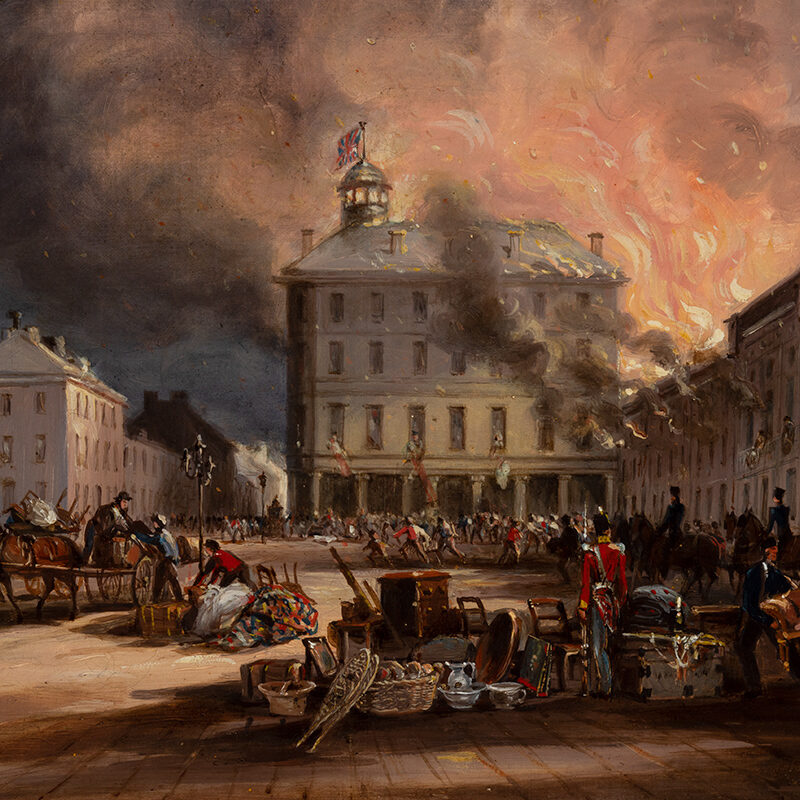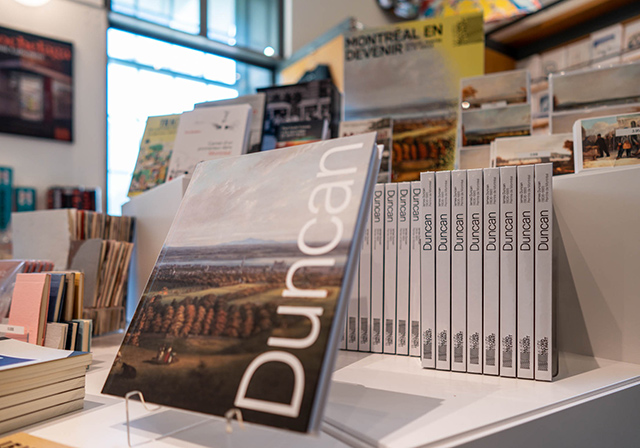Temporary Exhibition
form June 2, 2023 to April 21, 2024
Becoming Montreal
The 1800s Painted by Duncan
Take a trip back in time via the remarkable watercolours of James Duncan. Chronicler of his time, artist James Duncan documented Montreal’s development over a period of five decades, from 1830 to 1880. Exhibited together for the first time, these one hundred or so works offer viewers a unique journey into 19th-century Montreal. As a sort of epilogue, Mental Maps, a digital work created by art studio Iregular uses artificial intelligence to reinterpret Duncan’s work in the form of computer-generated images depicting a composite world of dreamscapes of a Montreal that no longer exists.
Bringing together a variety of the artist’s views, the exhibition offers a vivid look at Montreal and the realities of its residents and focuses on subjects that characterize life in Canada and Montreal’s urban landscape. Visitors will explore the island through the eyes of Duncan: the changing urban skyline from key viewpoints like Mount Royal and St. Helen’s Island, newsworthy political and social events, and street scenes featuring strollers and merchants alike.
Fascinated by local customs, Duncan captured the city’s lively street life, depicting residents engaged in everyday activities. Enamoured of the changing seasons, he celebrated the colours of fall and created distinctive images of winter.
Mental Maps by Iregular
James Duncan’s urban landscapes shaped the vision that people had of Montreal in the 19th century. What would the world look like in the eyes of someone whose reality was based on an artist’s illustrations?
To answer this question, digital art studio Iregular fed the works of James Duncan from the McCord Stewart Museum’s collection to artificial intelligence. Using this data and a generative program, the studio designed a three-dimensional virtual world of computer-generated images made of layers of superimposed topographies. This interactive system produces an infinite number of ethereal digital perspectives.
This virtual space hides or reveals the shadows in unexpected layers. The result is a unique, constantly changing experience that creates shifting dreamscapes derived from Duncan’s work.
We acknowledge the support of the Canada Council for the Arts.
5 things to know
The first illustrated guidebook of Montreal
In 1839, James Duncan illustrates the first tourist guidebook/history of Montreal, Hochelaga Depicta. Thanks to his reputation, and perhaps his monopoly on the art world, he is commissionned to create 20 plates: the title page, seven full-page views and twelve other pages with three images of Montreal buildings apiece. Duncan’s drawings depict the city as one could have experienced it in the first part of the 19th century, and that no longer exist, except for 8 buildings and monuments still standing today out of the 39 represented.
Depicting the monument above the tomb of Simon McTavish, founder of the North West Company, this image of an obelisk associates Montreal with an ancient culture, in contrast with the book’s many illustrations of the modern city.
Montreal before photography
Chronicler of his time, Duncan had a front-row seat from which to commemorate the events, both joyous and tragic, that marked life in Montreal. The artist vividly rendered the intensity of certain scenes set in Montreal public spaces, recording important moments in the news and stories of the day. Some of his observations were disseminated through the British press, and his paintings are invaluable visual memories of life in the city before photography was used to record current events.
The worst fire in Montreal's history
On July 8 and 9, 1852, Montreal experienced the worst fire in its history. The eastern center of the city was ravaged by flames sustained by hot and dry weather, strong winds and a inadequate fire-fighting system. Nearly 1/5 of the population is left homeless and nearly 1/4 of the city is reduced to ashes.
James Duncan, who witnessed this disaster, produced several views that will allow us to put this disaster into images and document it in the history of the city.
Montreal’s population increased fivefold
Between 1830 and 1880, Montreal’s population increased fivefold, from 27,000 to 140,000 inhabitants. As such, Duncan lived in a constantly changing city. An avid follower of the latest developments marking his adopted city, he celebrated and documented Montreal’s evolution for approximately 50 years.
Touring the island of Montreal during 48h
John S. McCord, who is the father of the McCord Stewart Museum’s founder and was a young lawyer at the time, became Duncan’s first patron by taking him on a pictorial tour of the island of Montreal from August 12 to 14, 1831. Accompanied by a coachman, the two men travelled from Pointe-Claire to Longue-Pointe via St. Anne, Senneville, St. Geneviève, Sault-au-Récollet, and Rivière-des-Prairies, ending their journey in Mile End.
Duncan created 12 ink drawings, employing a variety of nib sizes. These views of villages along the perimeter of the island feature their most picturesque buildings: churches and windmills.
Learn more
James Duncan
Born in Ireland, Duncan was the first British artist to settle in Montreal, then Canada’s largest and most dynamic city. At the age of 24, he began memorializing the natural environment of his adopted city. His work, which shows the English colony at its best, was reproduced in engravings and published in international newspapers.
Iregular
Founded in Montreal in 2010, digital art studio Iregular creates audiovisual installations, architectural projections and scenographies, with a focus on interactive and immersive experiences. At the crossroads between art and technology, these artworks experiment with geometry, light, algorithms, communication protocols, and AI. lregular’s work has been shown in 25 countries.
Be an insider!
Subscribe to our newsletter to get the inside scoop on upcoming exhibitions and cultural events.
Subscribe nowGo green
To come to the Museum downtown, privilege public transit and active transportation!
Tips to go green
